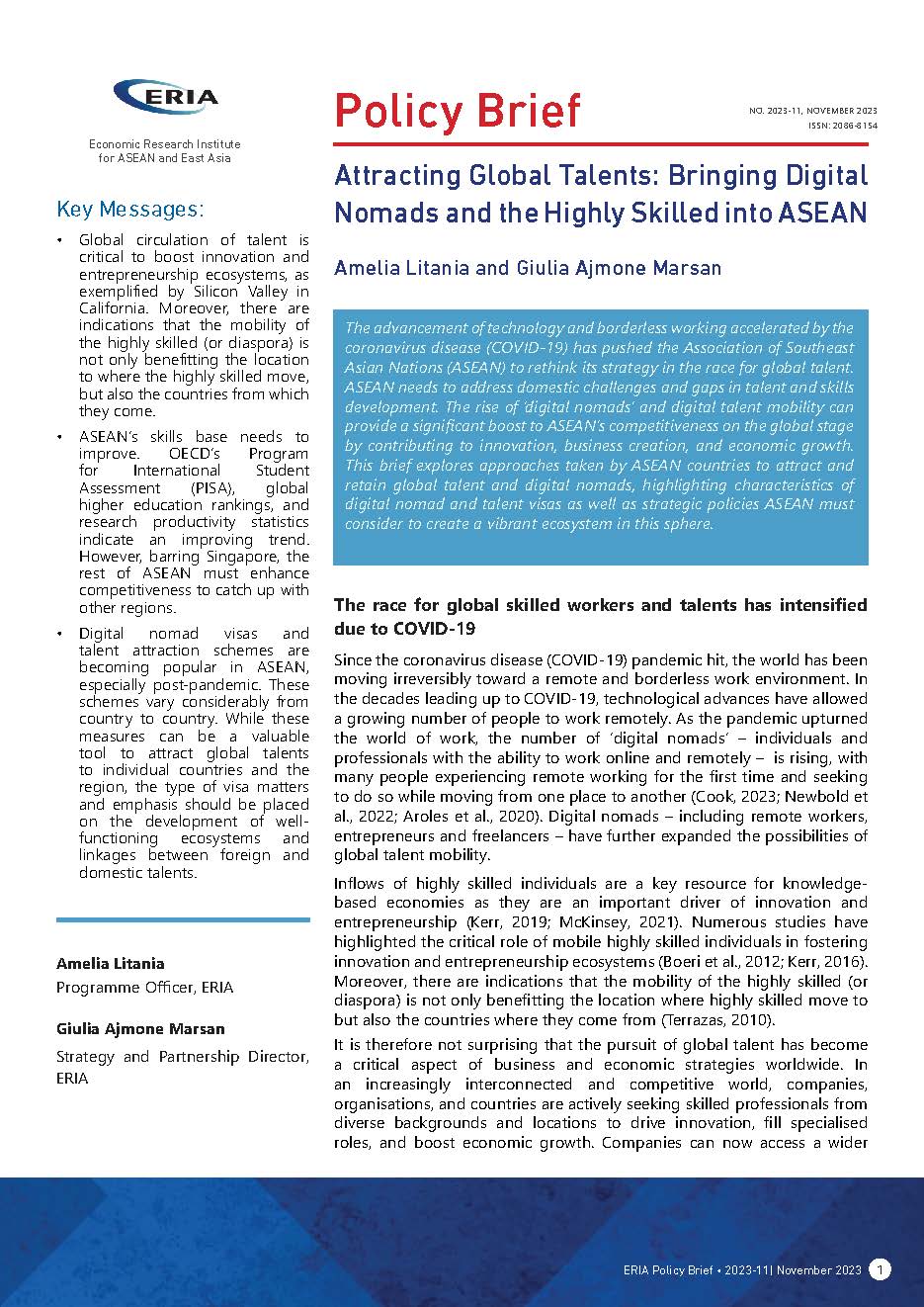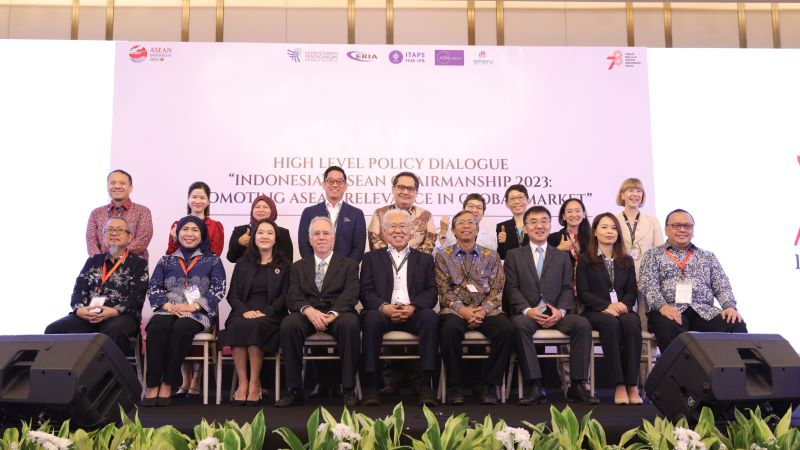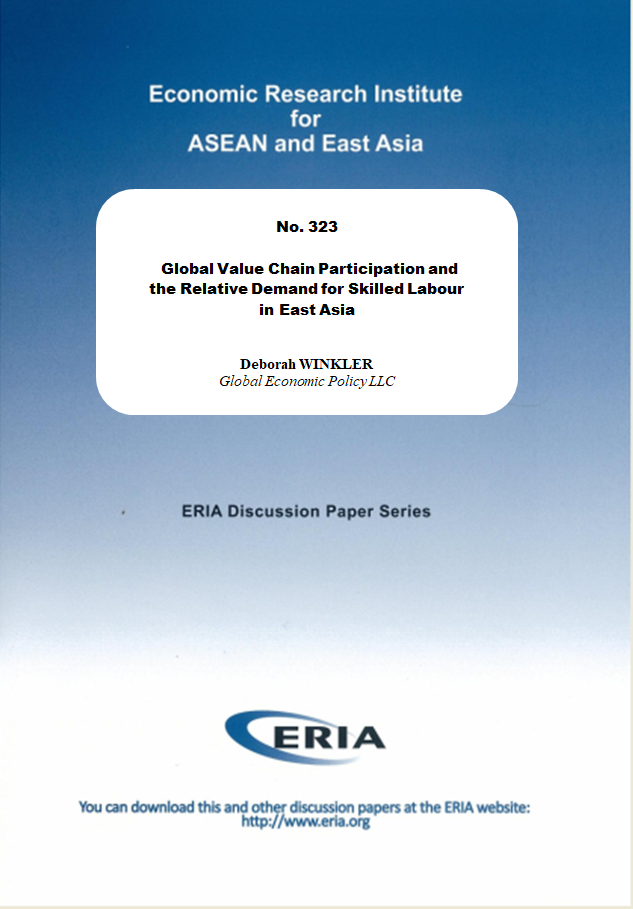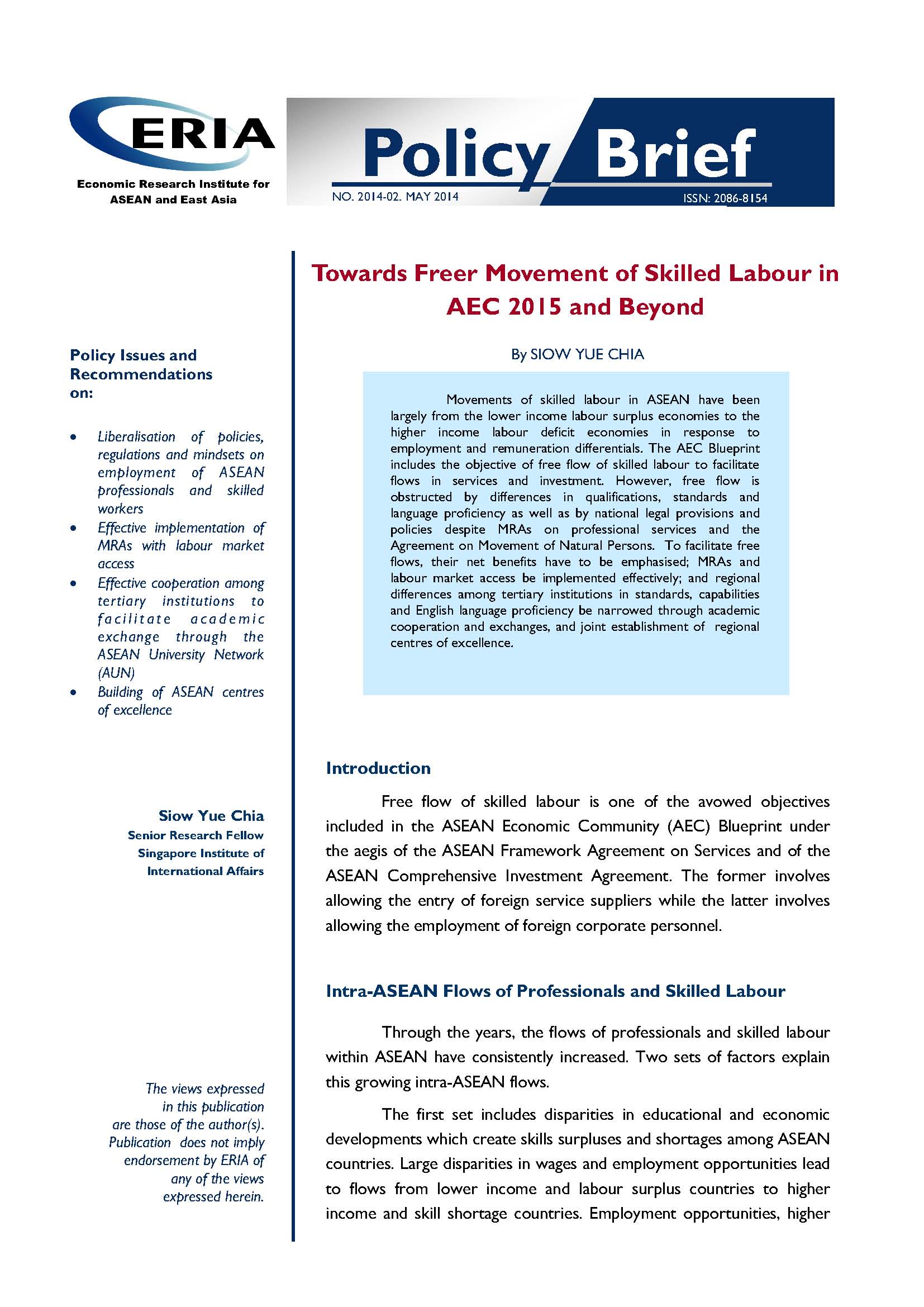Attracting Global Talents: Bringing Digital Nomads and the Highly Skilled into ASEAN

Date:
27 November 2023Category:
ASEAN, Connectivity, Education, Training, and Human CapitalType:
Policy BriefsTags:
ASEAN, Labour and Migration, Digital Connectivity, Digital NomadPrint Article:
The advancement of technology and borderless working accelerated by the coronavirus disease (COVID-19) has pushed the Association of Southeast Asian Nations (ASEAN) to rethink its strategy in the race for global talent. ASEAN needs to address domestic challenges and gaps in talent and skills development. The rise of ‘digital nomads’ and digital talent mobility can provide a significant boost to ASEAN’s competitiveness on the global stage by contributing to innovation, business creation, and economic growth. This brief explores approaches taken by ASEAN countries to attract and retain global talent and digital nomads, highlighting characteristics of digital nomad and talent visas as well as strategic policies ASEAN must consider to create a vibrant ecosystem in this sphere.
POLICY BRIEF NO. 2023-11
Attracting Global Talents: Bringing Digital Nomads and the Highly Skilled into ASEAN




